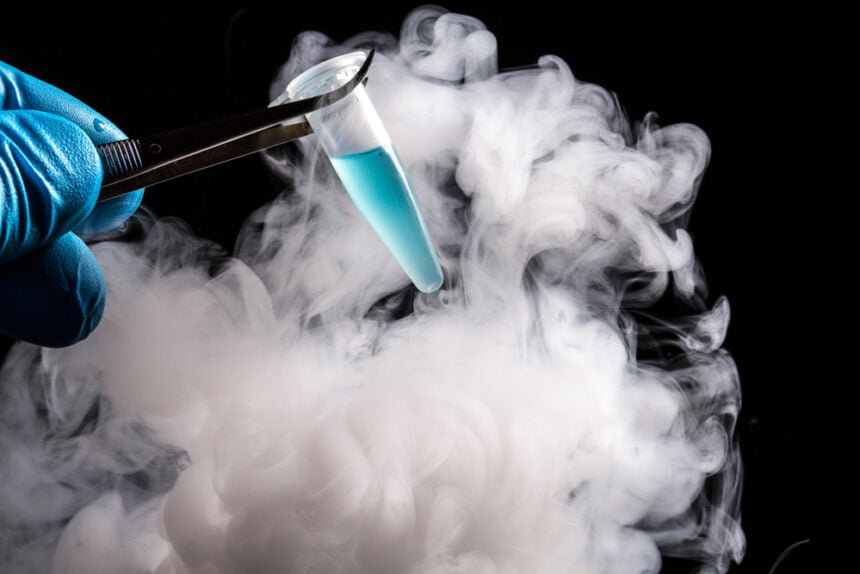Artificial intelligence has become a very important technological development in the life sciences. Michel L. Leite and his colleagues at Universidade Católica de Brasília addressed this phenomenon in their study Artificial intelligence and the future of life sciences.
AI is helping advance the life sciences in many ways, which include improving the outcomes of clinical trials and making certain features more accessible to both researchers and patients. One of the benefits of AI in the life sciences is in the field of cryopreservation.
Cryopreservation is the practice of preserving cells and tissues. It is a complex process where things can easily go wrong, but AI technology can help mitigate some of the challenges.
How Can AI Improve the State of Cryopreservation?
There is a growing need for stem cell storage which makes the idea of starting a business around this practice can be very profitable. Companies like IBM have also been involved in biological research. However, the preservation of the cells can be a very complex challenge to overcome. Getting the cells preserved while also maintaining their structural integrity is complex and is the reason why so many labs will outsource storage.
The good news is that AI technology can help with this process. Pravin Shende and Nikita P Devlekar discussed the merits of AI in stem cell therapy in their 2021 study A Review on the Role of Artificial Intelligence in Stem Cell Therapy: An Initiative for Modern Medicines. They stated that AI can help with many aspects, including cell preservation.
There are many benefits of using artificial intelligence in these settings. They include improving safety and making sure biological materials are stored optimally. It also helps with bioinformatics.
In order to appreciate the benefits of using AI, it is important to first understand the issues clinicians and researchers will face. Biological material needs to be preserved for long periods of time and it is essential that it be kept in the same exact condition by the end of the process as it was in during the beginning. If you are trying to do this as a medical field business then it is important to understand the process well. In this article, we will go over the essentials to keep in mind when you are trying to use a cryopreservation liquid nitrogen freezer for stem cell preservation.
Here are some ways that AI can help with this process.
1 – Identify the best medium with machine learning
Every system is going to need its own medium to successfully preserve the samples. It is crucial to understand which one is going to give you the right results.
Cryoprotectants are used for a few primary reasons. The first is to slowly freeze the sample while also reducing the salt concentrations. Secondly, they decrease cell shrinkage, and lastly, they minimize intracellular ice formation. With all that in mind, it is usually the case that you’ll need Glycerol, salts, and dimethyl sulfoxide (DMSO).
Some of these protectants are more effective at protecting biological systems that are cooled quickly since they promote extracellular glass formation. It’s important that the water remains liquid during this process which requires a temperature just below the glass formation stage.
For some applications, ready-to-use solutions are the best idea as they are the most effective and also easy to use. They also work with various media for great results. Unfortunately, they may not be best for all storage options.
AI technology is useful for identifying the best mediums to store biological material. Many labs carefully track data on the different storage systems they use and figure out which ones seem to work best under different conditions. An application with AI monitoring tools can recommend the best medium for a given material based on readily available data.
2 – Use the right method
The freezing method is as important as any other part of the process. There are several different methods to choose from but the one that’s best for you is the one that will give you specific results with your specific medium and sample.
The most common method and one that works very well with many different media is liquid nitrogen. It’s a popular choice due to it being chemically inert, non-flammable, and often the most economical.
Another common method is using Direct Temperature Feedback which does also use liquid nitrogen as it’s injected directly into the chamber and automatically adjusts for freezing rates.
When using a small number of straws or vials, the Plunge Freezing method is useful as it controls the cooling temperature by submerging the block of vials which controls the freezing rate.
AI technology can make it easier to automate the use of these materials. You can use a robot that relies on machine learning technology to handle these processes, so you don’t have to expose yourself to harmful liquid nitrogen and can accurately control the use of these materials.
3 – Safety
The lab environment that uses a lot of nitrogen can be quite dangerous if protocols are not adhered to. Since it is odorless and colorless, it can be inhaled without knowing. It is important to make sure that all containers are properly sealed and stored in a way that will prevent them from exploding or becoming contaminated with other chemicals.
This is another area where AI technology can be very helpful. More clinicians and researchers are using AI to improve the safety of their labs.

